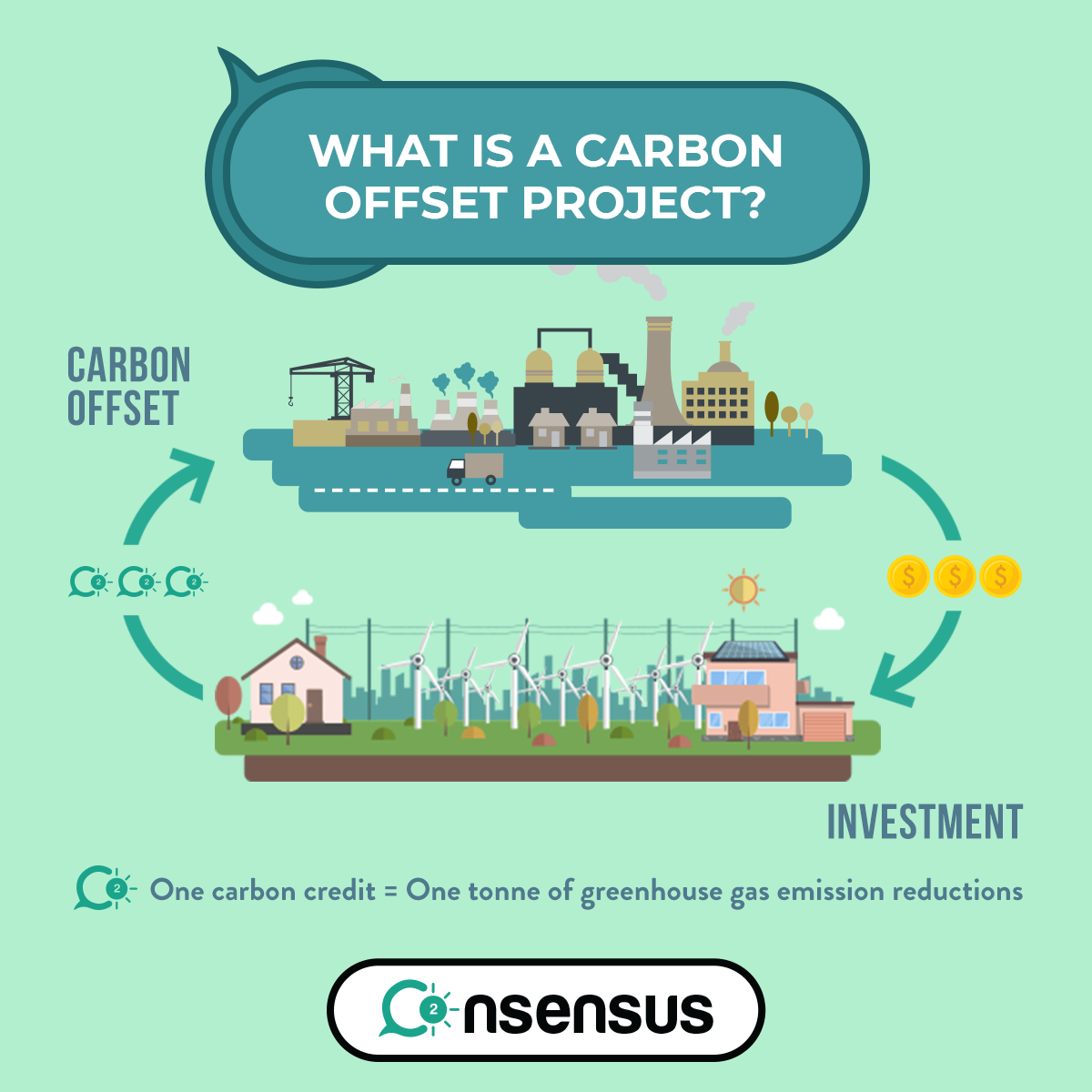Carbon offset projects are gaining pace as a new way of mitigating the damage done by excessive and wanton misuse of environmental resources.
However, there are a lot of opinions regarding what they are, and how effective they are in the long run.
Today, these points will be discussed wrapping up with some prominent examples of carbon offset project.
What are Carbon Offset Projects?
A carbon offset project, in the simplest of terms, is a project which converts your investments in money into equivalent reductions in carbon dioxide emissions. Each of these projects have a method – think solar power generation or mass reforestation in lieu of activities which produce problems in the environment while producing similar effects.
An example of a polluting activity would be generation of power using coal.
In terms of projects, many activities are used for carbon offset generation. Destruction of noxious greenhouse gases such as halocarbons, as well as generation of power through renewable sources are the most common kinds of such projects. Next, energy efficiency projects are gaining prominence, such as truck stop electrification to reduce tailpipe emissions.
Best Use of Carbon Offsets
Carbon offset projects involve a transaction between your money and projects which claim to eliminate excess carbon emissions. Since the effort of reducing your carbon footprint is done by the people who are working on that project, investing here might just turn out to be cheaper than actually reducing your carbon footprint.
Types of Carbon Offset Projects
Carbon offset projects exist in a number of variants. These include, but are not limited to the following varieties:
- Renewable Energy
- Energy Efficiency
- Industrial Gases
- Methane Capture
- Biosequestration: Forestry & Agriculture
- Carbon Capture and Storage
Renewable Energy, as the name suggests. Is based on decreasing the carbon content by radically increasing the share of non polluting energy sources.
Energy Efficiency projects are focussed on reducing wastage of energy and hence, the carbon footprint of certain activities such as waste management.
Industrial Gases projects are all about reducing the percentage of noxious gases from our environment, and switching over to safer alternatives on a large scale.
The other variants are all focussed on using natural methods such as increasing reforestation and decreasing the amount of methane and other carbon gases in the environment in order to reduce the overall carbon footprint.
Certifications
In order to know what the actual benefits of these carbon offset projects are, these projects are certified by a number of agencies in terms of standards. These agencies include Gold Standard, which is widely known as the best and most comprehensive standard of carbon offset. These do not include reforestation.
Other standards include the Verified Carbon Standard and the Green-e. More standards and organizations are coming up, taking cognizance of the impact that carbon offset projects have out in the real world. WWF has recently listed out a large number of offset standards, old and new.
Judging Carbon Offset Projects
Given that it is also an investment, buyers need to be aware of how to adjudge which projects deliver the best value. Projects such as tree reforestation are very popular, but have their own reasons for being controversial. These factors include the transient nature of these projects, as well as no real effect on the effect of fossil fuels on the environment.
Another such controversial project category is destruction of halocarbons, such as HFC-23.
Projects can also be judged based on a factor known as “additionality” – in simple terms, a project which involved the sale of offsets as a crucial factor behind the existence of the offset project. Additionality ensures your investment into the project buttresses its existence. Once additionality is guaranteed,
High quality offset projects include parameters such as ensuring validity of the project using reliable third parties, e.g. standardizing agencies, as well as checks and balances in place to ensure unwanted damage to the environment does not take place. Another important factor is the uniqueness of each carbon credit which has been sold – there should be no repetitions.
Best Practices
There are a number of steps one needs to take to ensure their carbon offset investment does not turn out to be detrimental in the long run, either financially or environmentally.
The first one is ensuring that the project of their interest actually has an important bearing on greenhouse gas emissions and is sustainable over the long run. Another factor is the additionality of each of the projects you intend to invest in. You also need to factor in the percentage of agricultural projects in your portfolio.
If it’s more than a ballpark estimate of 25 percent, you must factor in potential problems and plan accordingly. All of the offsets invested into must be verified as well as validated by third parties. Future crediting of offsets, which will be delivered at a later date, must be insured/guaranteed by some mechanism.
Further, a number of these practices have been outlined in the Code of Best Practices published by the International Carbon Reduction and Offset Alliance (ICROA). You must strongly consider becoming a member if you don’t have a membership yet. It can be a rewarding experience as a carbon offset project investor.
Conclusion
Carbon offset projects can be an easy and sustainable manner in which to balance your carbon footprint and get more carbon credits to your name. These carbon credits might be easier to buy than actually adjusting your lifestyle.
Make sure you research well before investing. You must also make sure to follow best practices before, during and after the purchase of carbon offsets.
